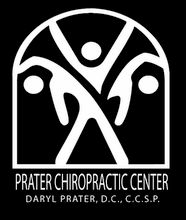 Strideouts provide benefits for all distances from the 5k to the Marathon
Strideouts provide benefits for all distances from the 5k to the MarathonStride outs are a beneficial and enjoyable workout that can improve both leg speed and running form.
These should be done after a good warm up, or can be done at the end of an easy run and on the road, grass or track. During the cold winter months it can be difficult to find a safe outdoor surface to perform this workout. When the grounds are snow and ice-covered it is best to do them at an indoor track such as the one we rent at WMU. Treadmills don’t work as well for stride outs as other kinds of workouts because they are so short, and the speed adjustments don’t keep pace. As soon as the treadmill attains the desired pace, it is time to adjust back down again.
Stride outs are accelerations of approximately 100 meters each with a jog recovery of about 100 meters in between. If you heart rate train, it is not necessary to monitor heart rate for these workouts as your accelerations are short enough that your heart rate is still increasing when you slow to a jog.
The key to these is to accelerate smoothly up to full speed, then hold maximal speed for 40 – 50 meters. It is important not to run so fast, however, that you start to tighten up. This is not an all out 100 meter dash! During striders, you don’t want to strain, but practice running relaxed. The first part of each stride out will be used to gradually build to maximal speed.
During the stride out, concentrate on maintaining good running form and staying relaxed. Avoid tensing up in the neck, shoulders and arms. Since it can be difficult to concentrate on all aspects of good running form at once, focus on one element during each stride out. During one stride out, focus on keeping your jaw loose. During another, practice driving with your arms forward and backward. Practice pushing off from the balls of your feet during one, maintaining good posture during another, and keeping your shoulders relaxed during yet another.
You’ll obtain the greatest benefits from doing stride outs by performing them during a moderate training session. It is best not to do them the day after a hard track session or the day after a long run. Plan them a couple of days after your last hard workout, or at least a day before your next hard one. It is ok to do them the day before a long run; many runners feel better on their long runs when they have done a set of stride outs the day before.
Reference: Pfitzinger, P., and S. Douglas. 1999. Road Racing for Serious Runners. Champaign, IL: Human Kinetics.










